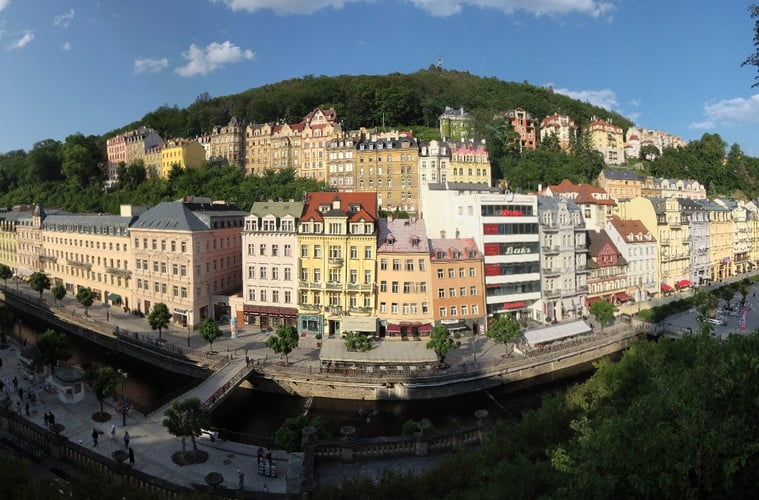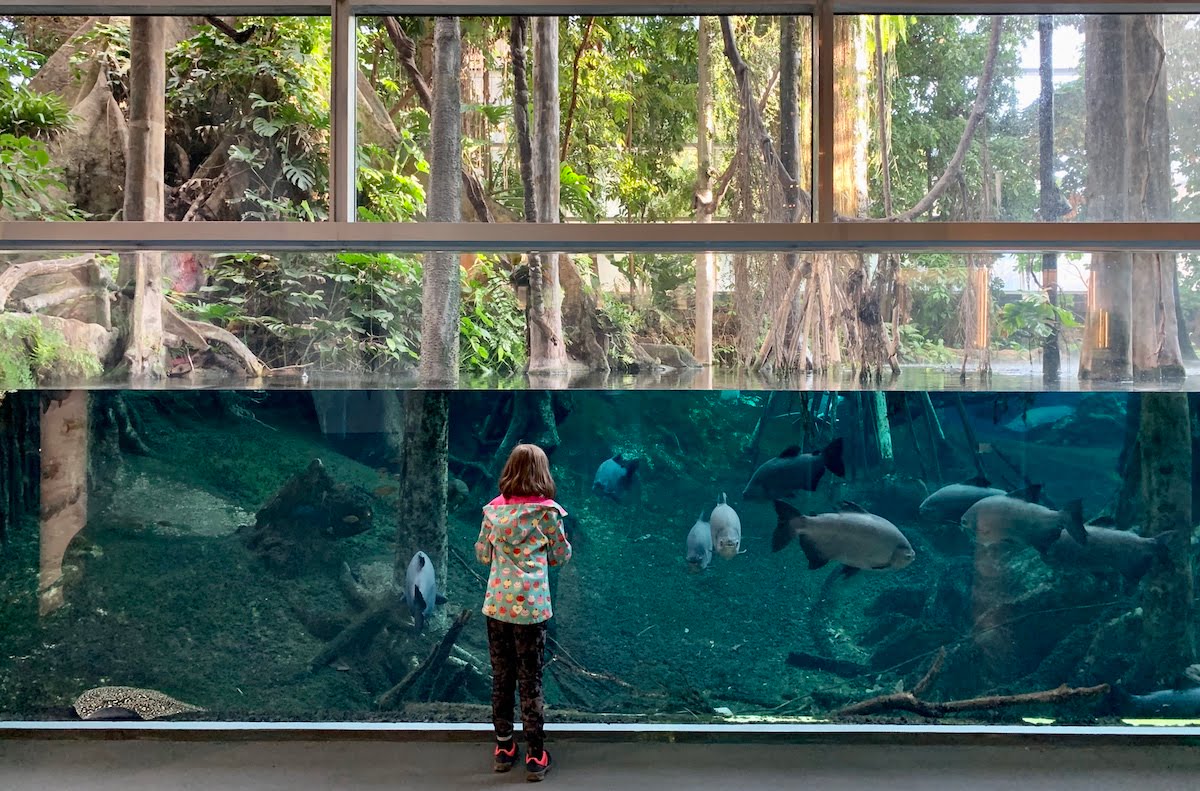Share This Article
Riga – the capital of Latvia joined my list of great places for a weekend trip. As always, an intense stay resulted in many thoughts, observations and ideas. I invite you to a report from this trip, which I hope will encourage you to organize your own city break in the capital of one of the Baltic republics.
Location, access and transport on site
Riga is located in the north of Latvia on the Daugava River and its estuary into the Baltic Sea. It is the capital and largest city of Latvia. You can get to the city by bus or fly from Poland. I chose the second option – a flight from Warsaw Modlin airport to Riga, which lasted about an hour. Bus number 22 will take you from the airport to the city center.
On site, I moved on foot (over 70,000 steps in two days) and by public transport. A very convenient option is to buy a ticket for the entire transport at the price of 8 Euro for three days. You can use it on buses and trams, of which there are a lot in Riga. Searching for public transport via Google Maps works well in Riga – timetables are up-to-date, which makes traveling much easier.
An issue that will definitely be useful to you in the subject of transport is the fact that in Riga we move the clocks forward an hour!
A short history of Riga
The beginnings of settlement in this region, i.e. at the mouth of the Daugava River to the Baltic Sea, date back more than the 10th century. Today’s city was founded in 1201 and quickly became an important Baltic trade center. Over the years, it has been subject to various influences – German, Polish, Swedish or Russian. In 1918, the Latvian state declared independence, but it did not last long. Independence returned for good on August 21, 1991, and since then Riga has often appeared on the international arena (e.g. in the context of being the organizer of Eurovision, the NATO summit or the World Ice Hockey Championship). You will learn a lot about the history of Latvia from the Museum of Occupation, about which in a moment.
First impressions
You only get the first impression of a city once. Mine was positive, but I’ll try to expand it with a few details. Driving from the airport to the center of Riga, I noticed a large architectural mix that impressed me, but green areas also had a large share in the landscape. Walking around the Central Market (about which in a moment) I felt a bit like in Odessa or Lviv, which brought back nice memories. Architecturally, it is also a journey through different cities of the world without leaving Riga.
Brief description of your stay
My stay in Riga was not long, but very intense. I left Kielce at 1 am, because the plane from Modlin, which was supposed to transport me to Riga, was leaving at 5.50 in the morning. The road to the airport is not the most pleasant due to renovations, but I was on time and the take-off was without delay. We arrived in Riga around eight o’clock. You can rest easy, the journey didn’t last two hours, and the difference was caused by the time change in Latvia (+1 hour to Polish time). Riga greeted me with a beautiful sun and a temperature of several degrees.
From the airport I went to the city center by bus and the journey took about half an hour. The first place on the itinerary was the Central Market. I had breakfast there and then went to the Ethnographic Museum, which is the farthest from the center of all the facilities I visited. From there I went to the Automobile Museum and then to the Fashion Museum. On the way, I also visited the synagogue. Later, a walk around the Old Town and an evening meeting with a friend over a local beer.
The second day started quite early with a visit to the Flea Market. I also saw an interesting figure of a fox on the wall of the building – one of the most interesting forms of street art in Riga. In the area, I visited the ruins of the Choral Synagogue and the Academy of Science – a building resembling the Palace of Culture and Science in Warsaw. That day I also visited the Natural History Museum, the National Library and the Chocolate Museum. Then I returned to the Old Town to take a walk and visit other interesting monuments, churches and parks. In the evening I went to the airport, from where I took off to Modlin an hour late. Dawn greeted me in the car as I drove back to Kielce.
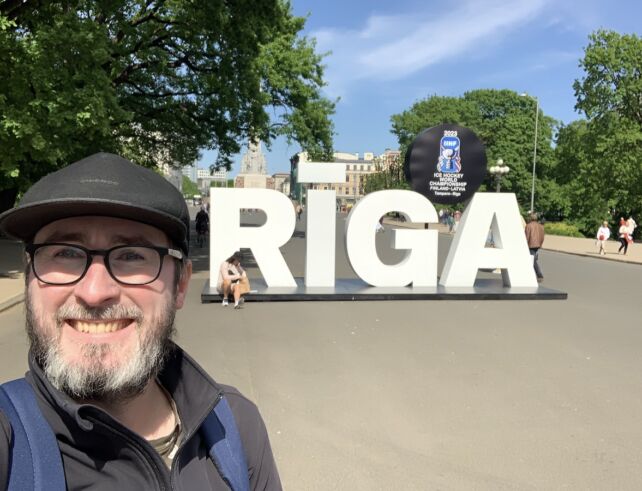
Riga – interesting places
There are many interesting places in Riga. In addition to the unusual architecture, beautiful parks, unusual museums, but also slightly less known and popular objects await tourists. When planning a trip to Riga, it is worth taking into account the objects that you will read about in a moment, but you will certainly also find other, perhaps valuable places that are also worth attention.
Museums in Riga
There are different museums around the world. Sometimes they are interesting, and sometimes the form of the message lags behind, despite the interesting subject matter. In Riga, I visited six museums, about which I will write a few sentences. Of course, there are many more in the city and it’s up to you which ones to put on your list to visit.
The first place I recommend to you is the Latvian Ethnographic Open-air Museum (Latvijas Etnogrāfiskais brīvdabas muzejs). It is located on the outskirts of Riga on Lake Juglas. You can reach it by public transport, but there is also a large car park on site. On a large, mainly forest area, several dozen objects from different regions of the country are waiting for you. Their density is small, but the buildings themselves are very interesting. It is interesting that the employees of the museum are dressed in regional costumes, which adds color to the visit.
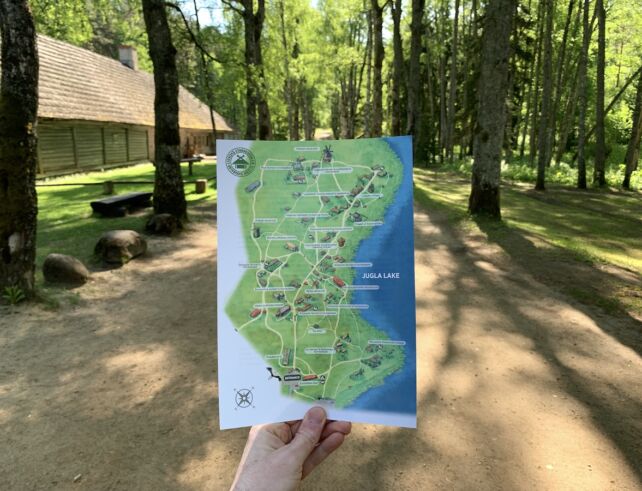
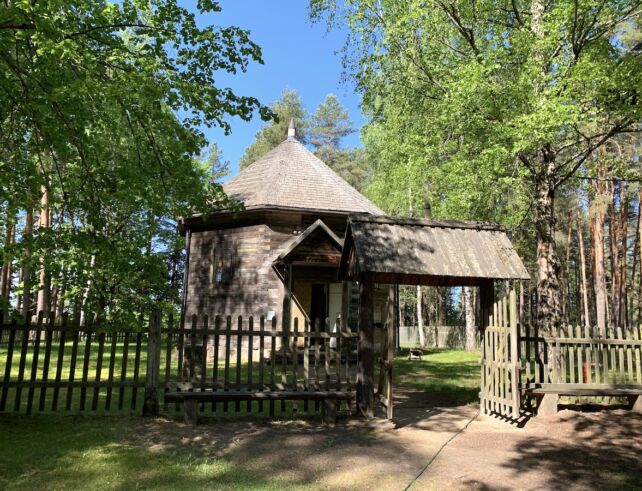
Another interesting object in this category is the Motor Museum (Rīgas Motormuzejs) located at 8 Sergeja Eizenšteina Street. You can also reach it by public transport (from the bus stop you can walk to the museum in a few minutes). It is located in a modern building, and the exhibitions are located on several levels. You will learn a lot about the history of the automotive industry in the world, but also about the beginnings and glory days of car production in Latvia. At the exhibition you will find a lot of interesting cars, some of which are real gems. The exhibition is interactive and, in addition to the vehicles themselves, you will also learn a lot about their construction and the events surrounding their creation.
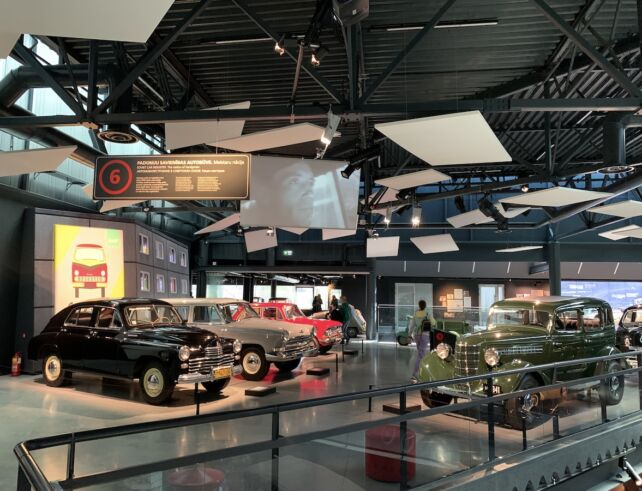
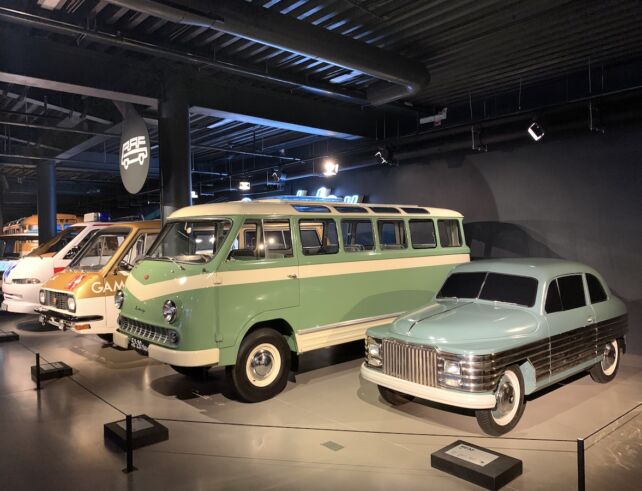
A place that many Riga residents don’t know about is the Fashion Museum (Modas muzejs). It is located in the very center and is a private unit focused on fashion and style. It changes its exhibition twice a year, and during my stay there was an exhibition dedicated to the 1960s. You will learn a lot about “Baby bloomers”, space inspirations, ubiquitous “mini” and other aspects of life. After the exhibition, you will be guided by an audioguide (English) who will share with you information about each of the exhibits. The Fashion Museum in Riga is not big, but it is an interesting place, especially for enthusiasts of the subject.
Is Riga the capital of fashion? Not quite, but after visiting the museum, you can equip yourself with a map where you will find local designers’ studios and shops where you can equip yourself with their work!
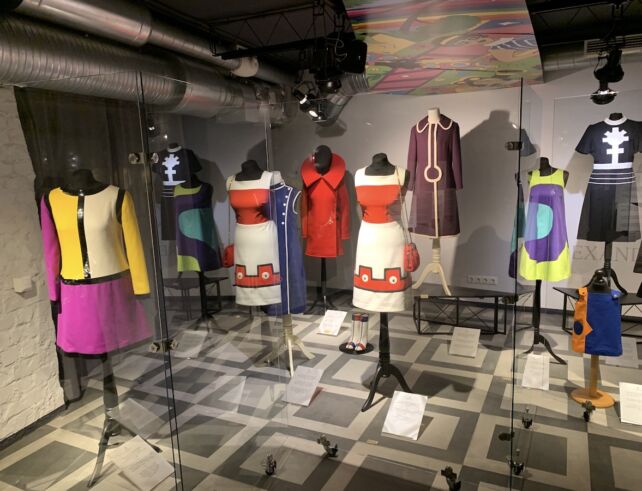
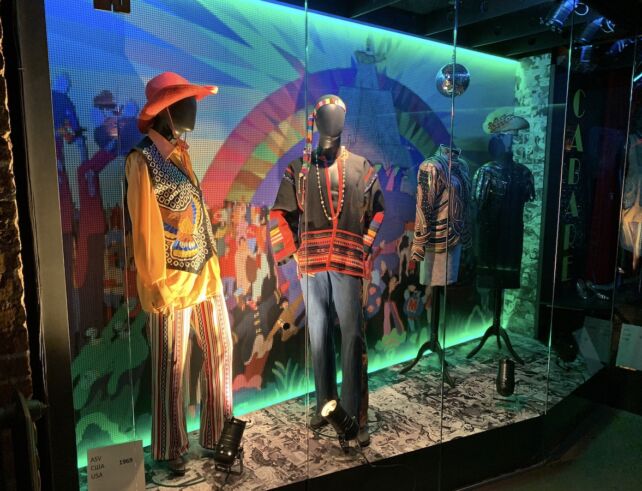
The Museum of the Occupation of Latvia (Latvijas Okupācijas muzejs) is another museum that I managed to visit during my visit to Riga. It is located in the very center of the city, next to the House of the Brotherhood of the Blackheads. The topics covered by the museum are difficult, but they provide a broad historical context of the history of this country over the years. Riga was at the center of many of the events described in the exhibition, which makes it even more dramatic.
Some historical elements Latvia has in common with Poland, others have occurred only here, but a good summary of the exhibition will be the fact that the history of Latvia was very complicated. The exhibition is narrated in Latvian and English, and during the tour you will encounter a lot of multimedia on your way. Despite the fact that before visiting this facility I was not familiar with the subject matter, I believe that visiting the exhibition was valuable for me and I recommend you to visit this place.
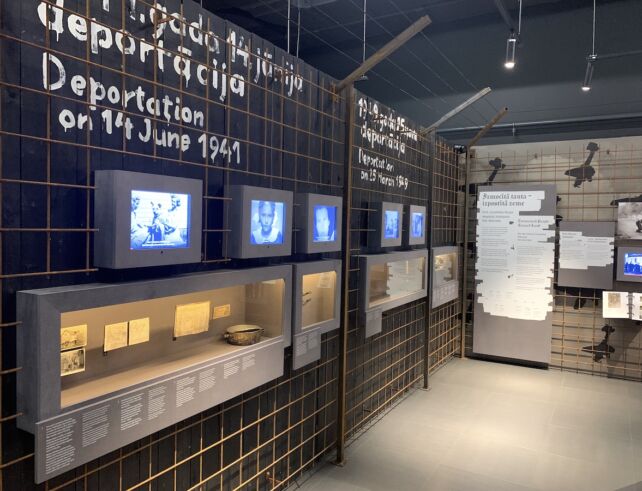
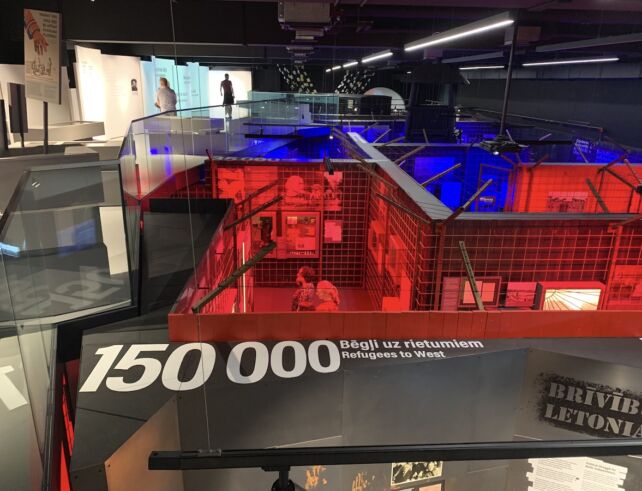
I guess everyone likes chocolate! You can learn about how unusual and sweet products from Riga are made, e.g. at the Laima Chocolate Museum (Laimas Šokolādes muzejs). This company has been producing chocolates, candies and jellies for almost 150 years. The museum itself is not big, but you will learn about the history of the brand and the process of making candies and chocolates. from the exhibition you will learn that Riga had a well-developed chocolate industry in the past, some traditions of which are still continued today.
A cup of hot chocolate awaits you for a good start of sightseeing, along with the ticket you receive a plate of this delicacy. On site you will also find a company shop with sweets and a museum shop with chocolate-related souvenirs (bath balls, earrings, etc.).
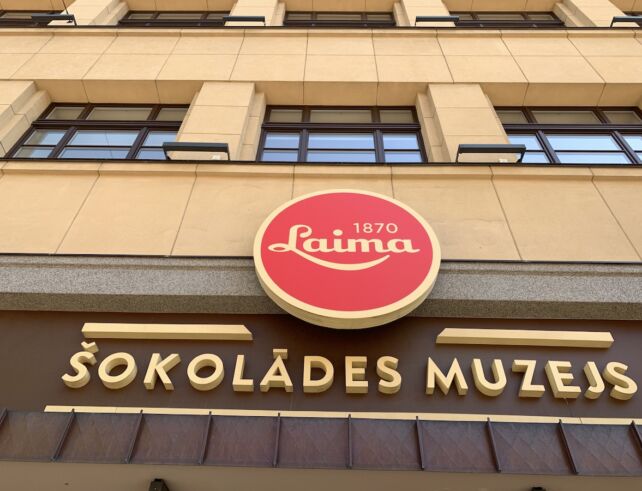
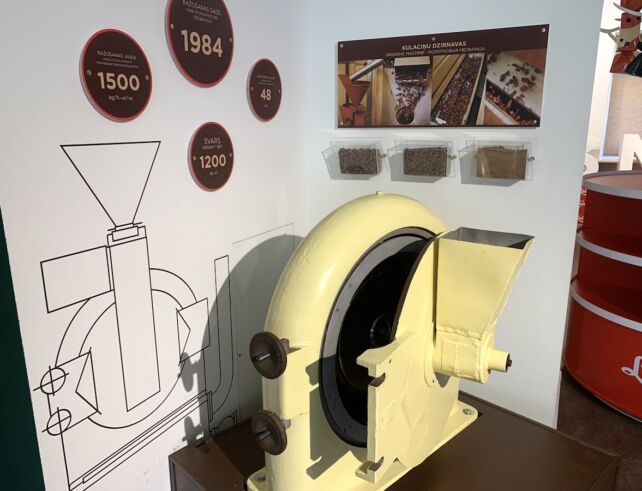
Riga Natural History Museum (Latvijas Nacionālais dabas muzejs) is an interesting place, although it may not be to everyone’s taste. It is located on several floors of the tenement house, and the exhibition covers various areas. I really liked the geology section – lots of cool gases and examples. There you will also find a section on animals, their protection and occurrence, but a large part of the exhibition is based on “stuffed” animals, which can evoke extreme emotions.
Most of the descriptions in the museum are in Latvian, but from what I’ve been able to find out, it is the museum that is finishing work on an application in English that will make it easier for people from abroad to visit.
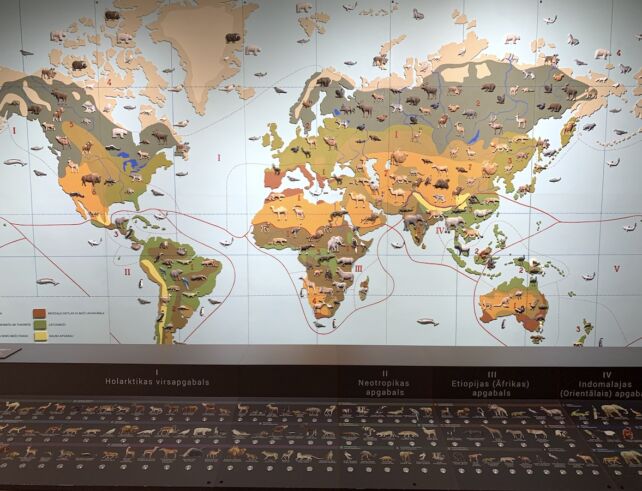
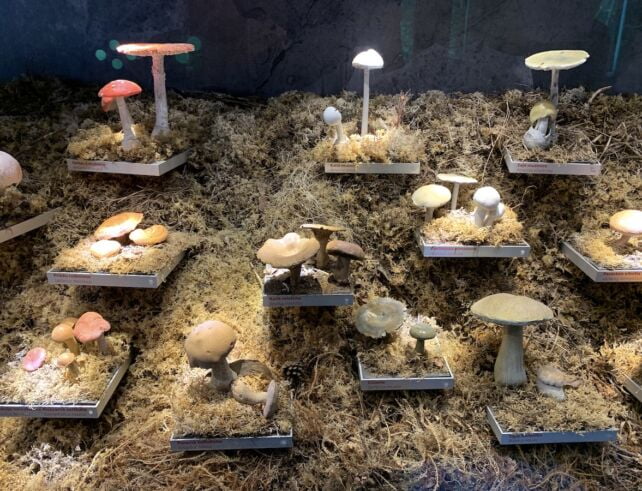
Riga and its old town
Since 1997, Riga, or rather its historic center, has been inscribed on the UNESCO World Heritage List. No wonder! The Old Town in Riga is large and very pleasant. Interestingly, it is not the Old Town that we can know from towns in Italy or other countries. Here, it smoothly flows into the next districts, but the architecture is impressive. There are several places worth visiting, including churches (St. John’s, St. Peter’s, the cathedral), the castle, museums, galleries and squares. Walking through the old town, you will surely come across Mazã Pils Street, where three tenement houses called “Three Brothers” are waiting for you.
In the old town you will find traces of old defensive walls and towers that blend neatly into other buildings. One of the architectural landmarks of the city is the House of the Blackheads, located in the first photo below. This 14th-century building impresses with its workmanship. It was also of great importance in the development of the city, because the Brotherhood of the Blackheads was a merchant association, bringing together wealthy local traders.
Riga and its Old Town is a nice start to get to know the capital of Latvia. Take a walk and admire what it has to offer!
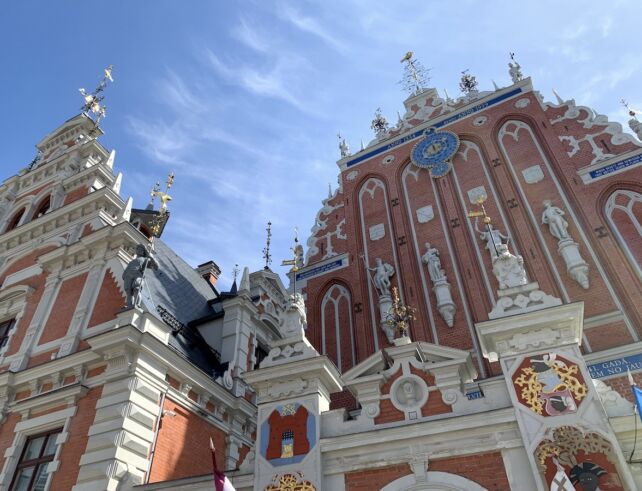
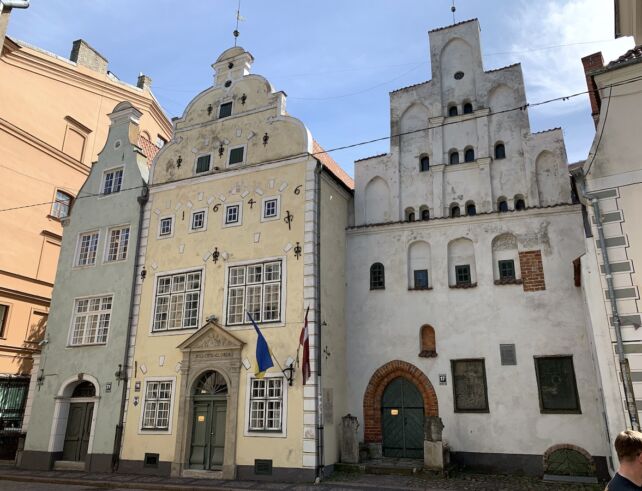
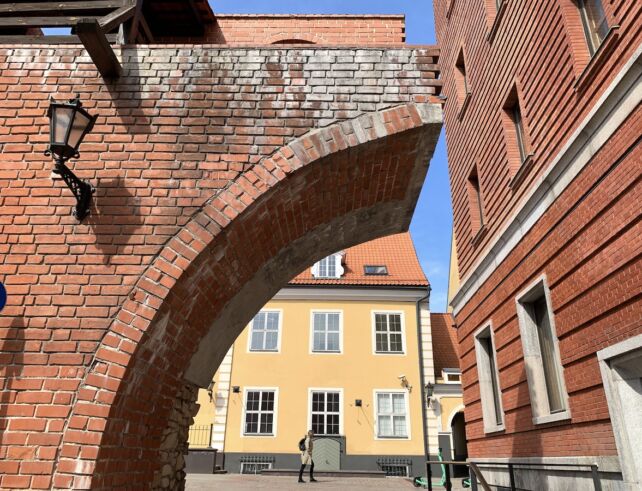
Freedom Monument
Another characteristic point on the map of Riga is the Freedom Monument (Brīvības piemineklis). It was unveiled in 1935 and is a symbol of the country’s pursuit of independence. At that time, it replaced the statue of Peter the Great standing in this place. The construction of the monument was financed by donations.
At the top of the monument is a statue that is supposed to be an allegory of freedom, measuring 9 meters! She holds three stars in her hands, which symbolize the three historical regions of Latvia ( Kurzeme, Vidzeme and Latgale). The whole thing is almost 43 meters high. It is also worth looking lower than at the very top because the Monument to Freedom includes 56 sculptures with different symbolism. A friend from Riga told me that it is possible to enter the monument, but it is extremely difficult.
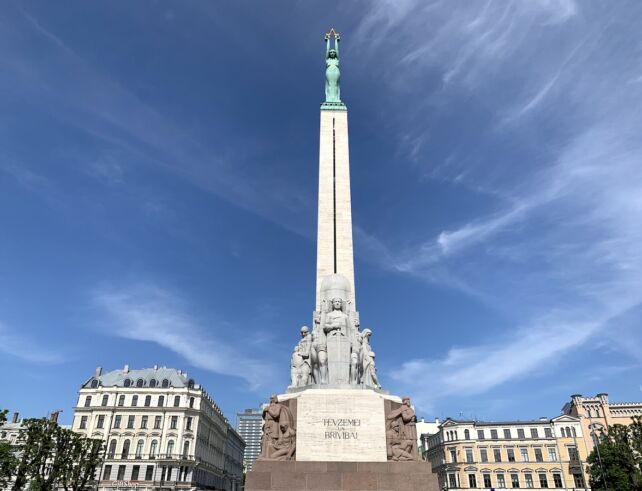
Central Market
Right next to the bus and train station is the Central Market (Rīgas Centrāltirgus). In the halls, which were built using aircraft hangars, there are stands with a variety of goods. Many people claim that it is one of the largest markets in Europe, and the number of stands is said to reach three thousand (in halls and outside).
What can we buy at the market? I can risk everything. The largest part is vegetables and fruits, but you will also find clothes, dairy products, sweets, meat, fish and much, much more. There are also cafes and other dining options. Even if you don’t plan to do a lot of shopping, a walk around the market will show you what Riga and Latvia are all about when it comes to tasty, seasonal products that are often produced locally.
The market itself was established in 1930 and today covers an area of over seventy thousand square meters. It is estimated that around 80,000 people visit it daily. You can check the opening hours on the market’s website. In addition to the Central Market, Riga also has several smaller ones, but it is here that the most traffic is concentrated!
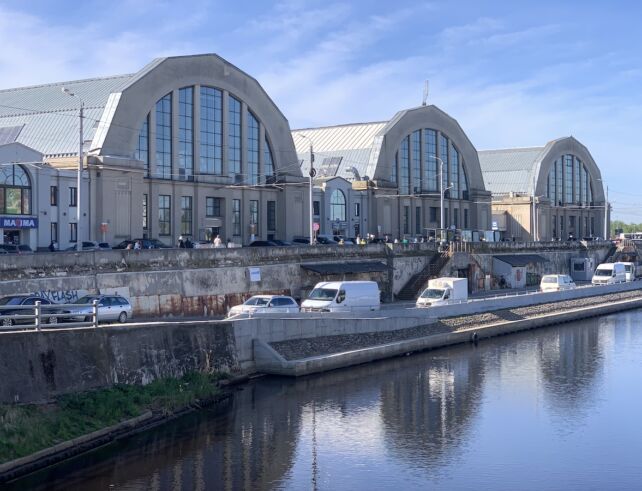

Architecture
Raga is a real architectural mix! Coming from the airport, you will see beautiful wooden villas on the way, and the closer to the center, the more interesting this mix will be. In Riga, medieval Art Nouveau tenement houses and the “large panel blocks” known to us from Polish blocks of flats are adjacent to each other.
The best way to get to know the architecture of Riga is to walk around it and “get lost” between the buildings. All you have to do is look at the photos in this text and compare the National Library, the “Three Brothers” tenement houses, the synagogue or the market and it will give you a taste of the architectural mix!
Riga is a city where every architecture fan will feel like at a great outdoor exhibition. Most of the buildings in the center are in good shape, so there is even more to see!
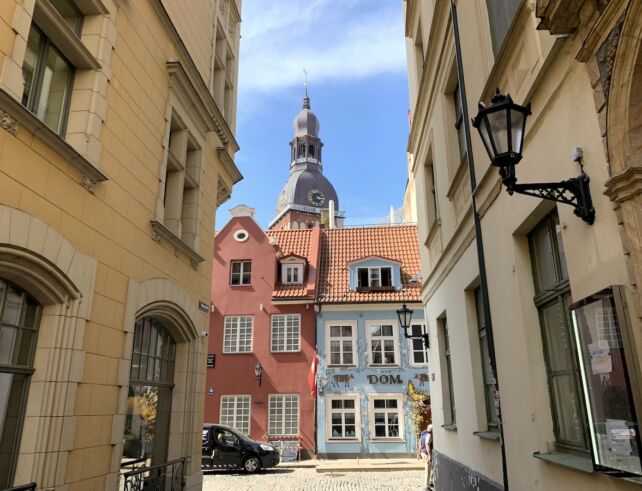
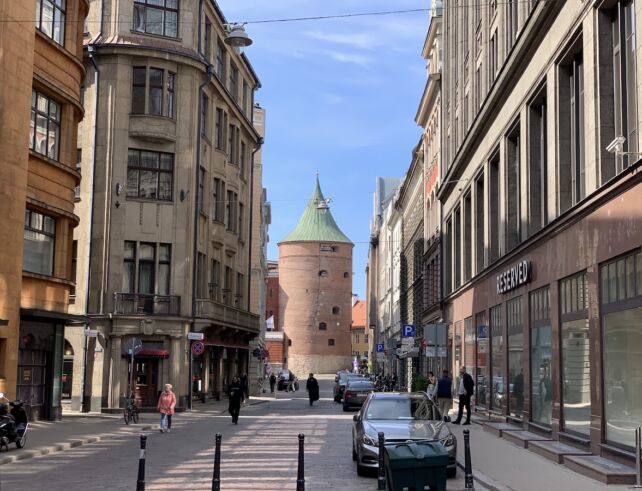
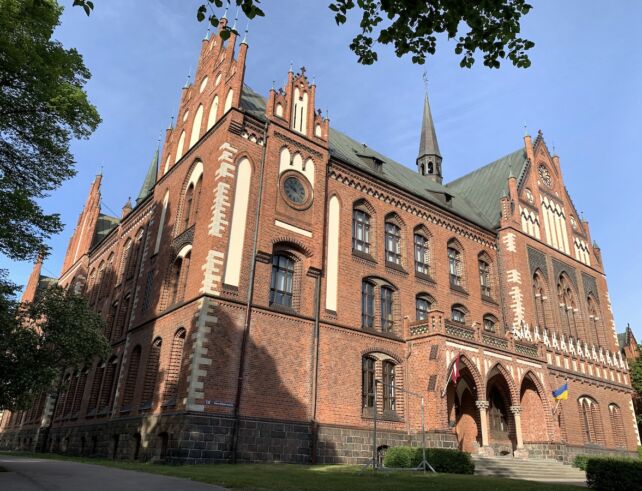
Churches, churches and synagogues
Riga’s old town is full of temples of all kinds. We will find there Catholic and Orthodox churches, synagogues and others. Admission to many of them is free. Entrance to the Church of St. Peter and the viewpoint is paid 9 Euro, and the synagogue 3 Euro (still open). There are, of course, more churches of various types waiting for you, and if you happen to be passing by one of them and their doors will be open, go ahead and take a look because they are interesting objects.
An interesting place that I managed to visit and impressed me was the Cathedral of the Nativity (Rīgas Kristus Piedzimšanas pareizticīgo katedrāle). This is an unusual Orthodox temple, but unfortunately you couldn’t take photos inside, so the memories remained only in memory.
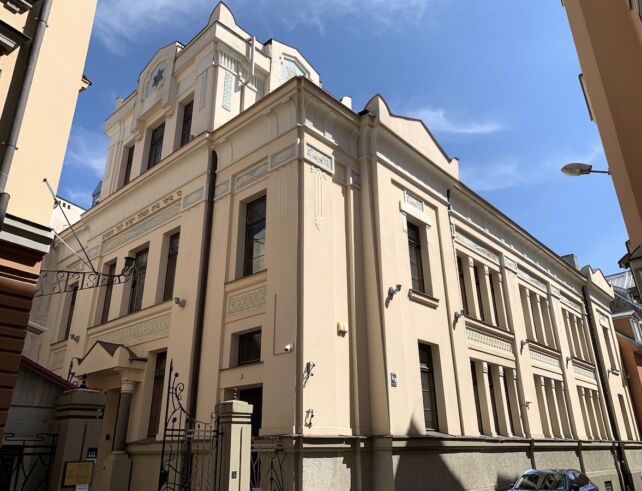
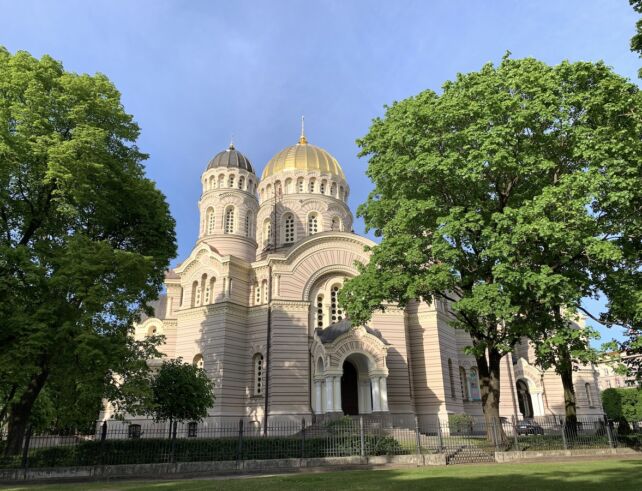
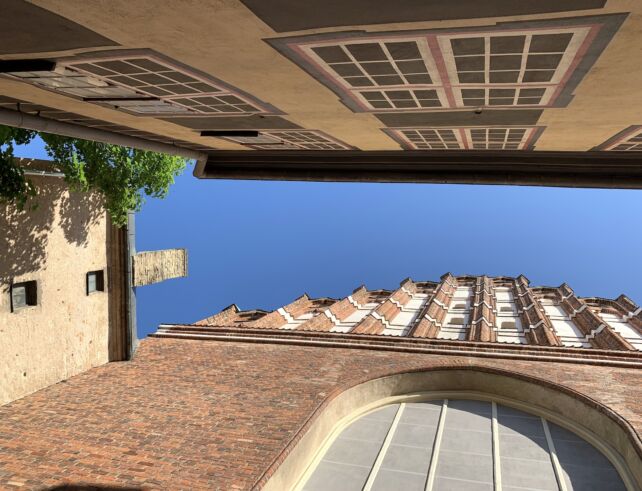
Riga and the “Palace of Culture”
Warsaw has its Palace of Culture and Science, and Riga has a building that looks quite similar and is the seat of the Latvian Academy of Sciences (Latvijas Zinātņu akadēmijas augstceltne). The building was designed on the model of the so-called Seven Sisters of Stalin in Moscow, and its construction was completed in 1958 (commissioned two years later). There is an observation deck at the top of the building. The skyscraper has 21 floors and measures just over 107 meters.
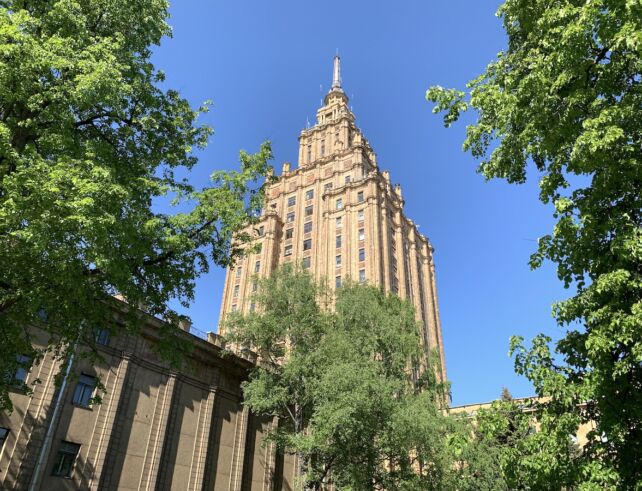
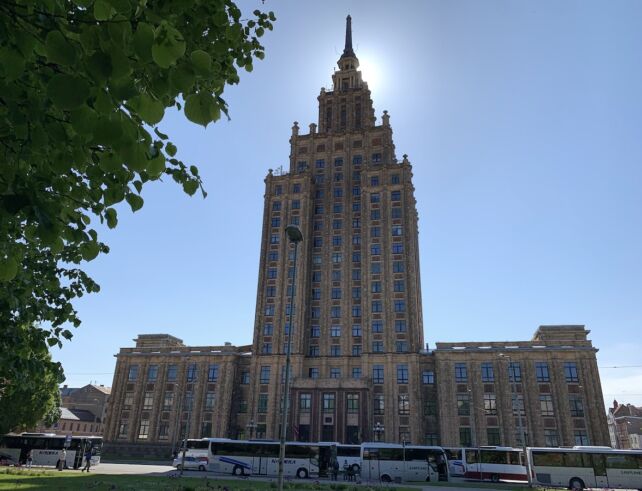
National Library
The impressive building that you can see from different places in Riga is the seat of the National Library (Latvijas Nacionālā bibliotēka). It was established in 1919, but its current seat is a work from 2014. It was designed by Gunnar Birkerts. The building is called the Castle of Light
The library has over 4 million publications in its collection. Inside, the building is impressive, and in addition to the library function, you will also find there, for example, an exhibition devoted to books over the years. It is also a place of cultural and information activity for the inhabitants of Riga, but also for guests from all over the world.
In the Library there is also an object that I have not been able to see, and it is the Dain Wardrobe (Dainu skapis). It was inscribed on the UNESCO Memory of the World list. It contains a collection of local folk songs and has over 270,000 entries.
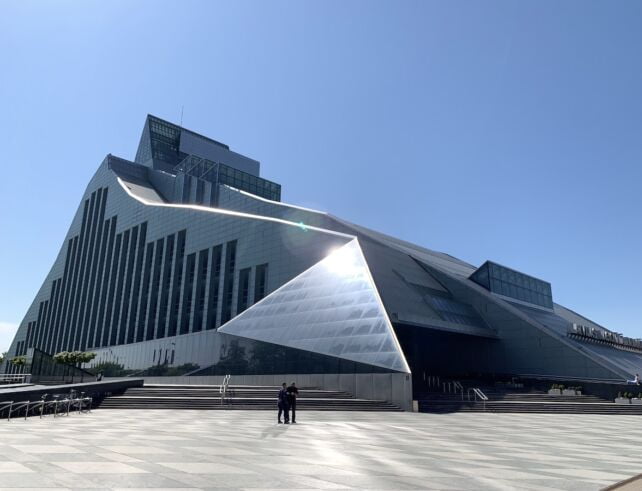
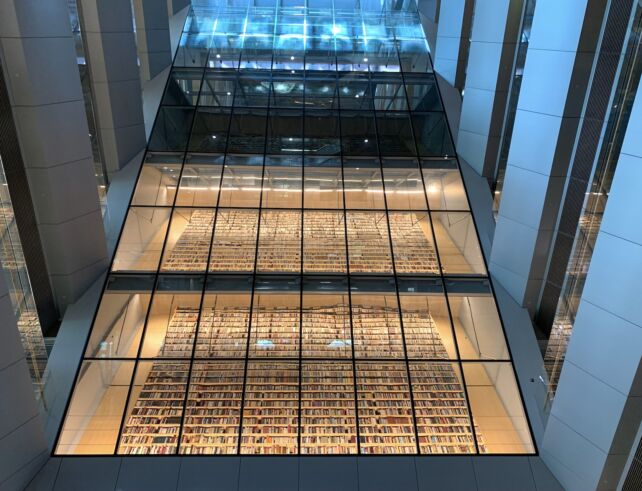
What is worth trying?
Is Riga a gastronomic hit? I’m not convinced, but just like we can say about the architectural and cultural mix, the cuisine here is also diverse. I asked a few friends what I should eat locally to get to know the local flavors, but getting answers was not easy.
Riga is the capital of the country, so you will find a lot of international cuisine here. Chain stores such as Mc Donalds or KFC are waiting for you, but it is also worth checking out local restaurants. The first one that I will recommend to you is Lido. It is a chain of buffet restaurants, with local cuisine, but also international inspirations.
Among the soups that friends recommended to me, there were two. The first one that is associated with this region, i.e. cold soup. I had the opportunity to try it and it was very nice fresh – just like I make at home.
It is worth trying Latvian beer, because the inhabitants of Riga have something to be proud of in this field. Of course, try Balsam Riga, which you can read about in the next section.
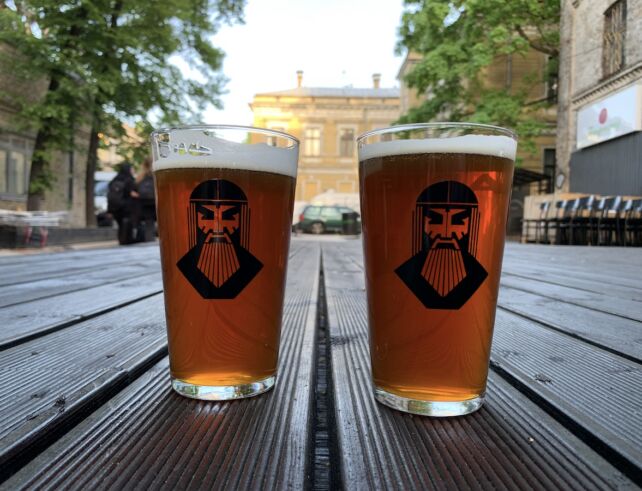
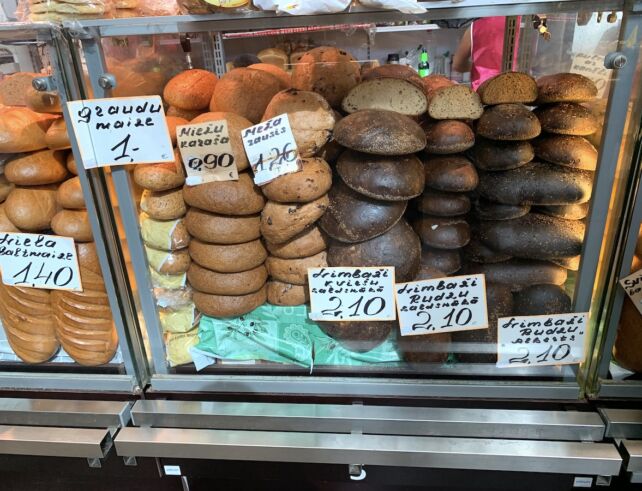
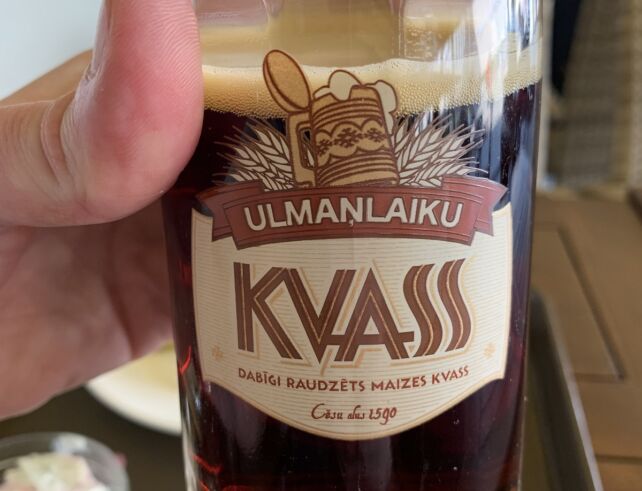
Souvenirs from Riga
Riga is a diverse city and the souvenirs you can bring back are varied. Many official websites or souvenir shops will tell you about amber products or traditional wooden products. There you will also find matryoshka dolls, but those listed are not in my area of interest.
I will advise you what to bring from Riga in terms of culinary. Let’s start with Balsam of Riga. It is a herbal liquor whose history dates back more than 250 years into the past. It has many health properties, and in addition to the classic version, currant and cherry are equally popular today (and with a lower alcohol strength). I also saw a chocolate mint version on the shelf in the store, but this time I didn’t dare. The lotion is sold in stoneware bottles of various capacities, and you can buy it in virtually every store. If you only have hand luggage, Duty-Free at the airport is also available. Slightly more expensive, but no great tragedy.
The second product that I think you should pay attention to is sweets. I focused on the Laima brand, where I had the opportunity to visit the museum. It has been on the market for over 150 years and produces chocolates, candies, jellies and other sweets.
Certainly, an interesting option is Latvian cheese, which you will find there a lot. In the markets, the choice is huge, as in the Central Market. Soft, hard, long-maturing and short – in a word, there is a lot to choose from! Of course, it’s also worth buying bread. You can find Latvian bread in many options, some of which are not widely available in Poland.
During my trip I also learned that the Stenders brand comes from Riga. You can get her cosmetics in many drugstores in Poland, but bought in a company store in the city where the brand was established, they can become a nice souvenir.

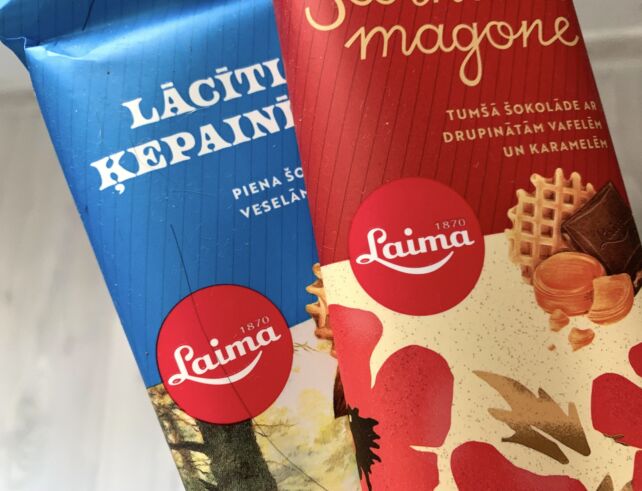
Is it worth visiting Riga?
I think Riga and I have a chance to be friends. For now, it’s a friendship relationship, because we haven’t had a chance to spend a lot of time together, but it has potential. If Riga appears among your weekend destinations, choose it without hesitation. It is a unique city with an interesting, though turbulent, history (just like the history of all Latvia).
A weekend is enough for you to get acquainted with it, but it is worth planning a longer stay thanks to which you will be able to visit the Baltic coast or the nearby reserves and National Parks.




